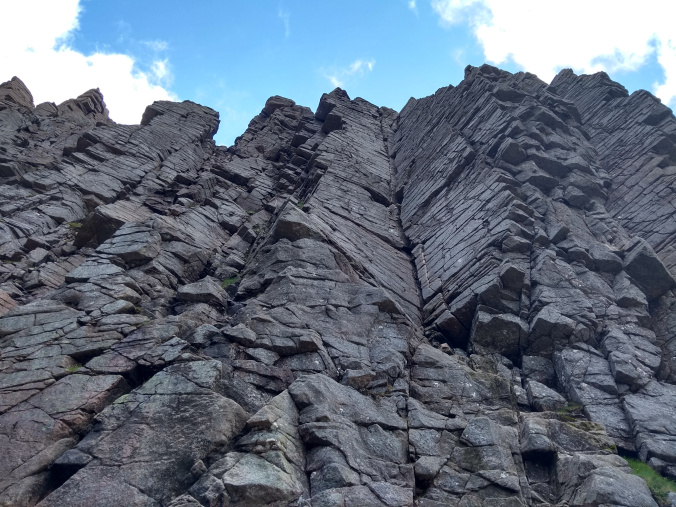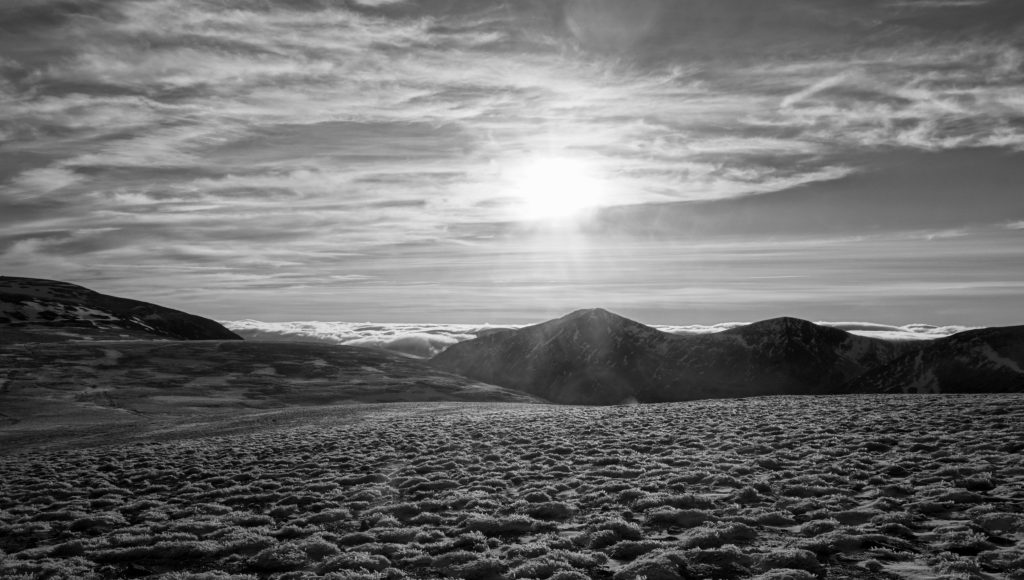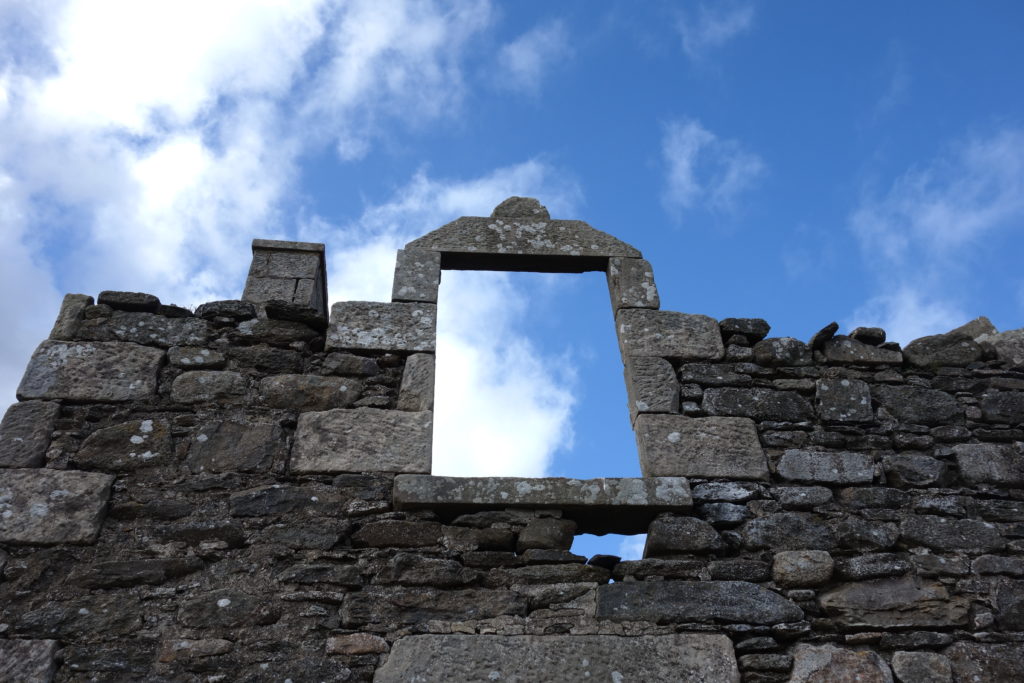From Anna Fleming:
During this topsy-turvy time of global pandemic and international lockdown, when normal life is on hold and bad news proliferates, I had the wonderful and slightly surreal experience of winning two writing awards on the same day. First, the manager of Moniack Mhor called to tell me I had won their Travel Writing Award. Then, two hours later, while I was still basking in that success, an email arrived, stating that I had won the Hugh Miller Writing Competition. The judges explained that my geology-inspired piece “stood out for its beautiful, tactile imagery and direct engagement with the Cairngorm mountains. A wonderful insight into climbing within and around granite, and the power of the rocks versus the power of the human body ties the piece together skilfully.”
The winning essay for the Hugh Miller Competition was inspired by a piece that I wrote for Caught by the River last year. Developing on that earlier writing, I went deeper, looking to explore the relationship between a human climbing body and geological space and time. I am delighted to share this essay with readers of Caught by the River.

On a grassy ledge high inside the corrie bowl, we pause, breathless. Below, the Great Slab rumples its way down into the basin. A luminous pink plate perfectly angled to catch the sun: this feature is visible for miles on clear summer days. Yet up here the slab is just one fractured rock among many.
We had slogged up from the ski-centre, following paths through heather and burns, picking our way between boulders and trudging up steep slopes, feet sliding on moss, grass and scree. We passed the lochan inside the corrie, which glittered and waved a deep enticing turquoise. Sweet floral notes hung in the air. We carried on, aiming for a certain line.
Over the past few years, I have roamed the Cairngorms, charging up summits, teetering across boulder fields, sliding in snow, peering into lochs. The landscape fascinates me. The hills roll and undulate – rising up, stretching out, falling away – the scale can be unfathomable. The massif is unlike any other in Britain. And the climate is harsh. Conditions change in the blink of an eye. A pleasant morning disappears in a howling blizzard. The Cairngorms are a hard place to grasp.
Different disciplines have their own ways of questioning landscapes. Archaeologists dig through layers of history. Ecologists survey life: identifying species, assessing distribution and noting change. Geologists plumb the mineral matter of the universe. Climbing is my discipline. I climb to feel the landscape. Rock sharpens the senses. With hand, eye, mind and body thoroughly engaged, I briefly touch a distinctive essence of place.
In my quest to know the intricate, weathered and harsh world of the Cairngorms, I was drawn to one particular line. At the edge of the plateau, in a buttress that towers over Coire an Lochan, two rock faces are severed by a deep cut. The cleft is clear and dark; the line is striking. Savage Slit runs clean into the granite like a knife cut in butter.
Savage Slit is a prized winter climbing route. When the ice sets in, mountaineers travel across the UK to tackle this test piece. Cocooned from the cold in gloves and thick layers, the winter climbers carve out their routes, stabbing axes and crampons into the frozen veneer. I prefer to work with friction. I like gripping rock, observing its character and contours, feeling its blemishes through thin rubber soles.
After flaking the rope and loading my harness with metal gear, the route begins. A jumble of broken rock and ramps lead up to the slit. I clamber quickly through the clutter. I want to feel my body inside the granite.
Granite is the substance of the Cairngorms. Beneath all of the surface matter – the plants, gravel and wind-scoured soils – lies the bedrock. It was formed some 427 million years ago from batholiths of molten rock that cooled slowly underground. My hands clasp ancient crystals. Grey quartz, pink and white feldspar and flakes of black biotite mica. The surface is smooth and grainy. The rock grips without scratching.
This granite was fired into existence by the Caledonian orogeny. Continents collided, the Iapetus Ocean closed and rock was folded, crumpled, cooked and uplifted. From the upheaval, an immense mountain chain rose. Cairngorm granite formed beneath peaks of Himalayan scale. Over millions of years, wind, water and ice eroded away these giants, although remnants can still be found, stretching from Norway, through Scotland into Ireland, Greenland and America.

Reaching the foot of the slit, I discover the opening is surprisingly wide. From below, I had thought I would climb inside the dark column. But the slit is a loose sock: it will not hug my body. Instead, I look out to the rock face.
The face is jointed in a pattern of horizontal and vertical breaks like masonry. The gaps provide plenty of pockets for my hands and feet, but each block is rounded. There are no sharp edges to hang off. Nothing to pinch. I place my right hand onto a sloping edge; find another curved lip for my right foot and step up, pulling my palm into the granite. My hand holds; my toes stay on. Confidence grows: I push against the stone, trusting friction.
Balancing on ledges, I navigate two rock faces, sometimes bridging across them, legs stretched over the slit. The climbing is smooth, the route is clear, my gear is spaced but I feel well protected. This was not how I had imagined Savage Slit. I had expected drama and tension: to meet a great challenge and feel my nerves singing with the mountain exposure. Instead, I feel comfortable. Like a warm river on a hot afternoon, the rock welcomes my body.
Some people assume climbing is all about adrenaline. That climbers get on the rock to feel the rush. For me, climbing has little to do with adrenaline. I get a rush when things go wrong. Climbing demands intense concentration and precise movement; adrenaline makes me shake. On the rock, there is no space for anything other than the world beneath my fingertips. I am alert, receptive and responsive. My hands speak to stone. Everything else disappears.
Ahead, the flow is broken. The slit is plugged by a huge chockstone. Ice and water must have worked at the stone, slowly fracturing and loosening the roots, until the connection between block and rock-face was severed. Instead of crashing down to the corrie below, the block slumped into the slit where it wedged fast.
I consider my approach. To climb over will require some strenuous hauling. When Richard Frere climbed Savage Slit in July 1946, he headed inside the slit here. For Frere, an early climber on the first ascent of the route, squirming inside the grimy darkness was safer than tackling the exposed face. Seventy years later, climbing has changed. I tackle the chockstone direct, reaching my arms to the back of the block and plunging my feet into cracks before walking up the stone as I haul my body up and over. My muscles fire up, my heart thumps, and I stand on top of the stone beaming. Then I peer down into the slit.
My stomach flips. The slit runs deep into the mountain, stretching back and back. Like a crevasse, the cleft plummets down into a terrible yawning interior. Far below, in the murky depths of the cleft lies scattered debris. A waterbottle. A harness. A shoe.
Granite tells stories. The lost objects trapped inside the slit say that modern climbers have been here (and some encountered unexpected difficulties). Ivory scratches on the grey-pink rock announce the passage of crampons. Loch Avon and the Lairig Ghru tell stories of a different scale. These landscape features bear witness to the incredible force of ice. The deep troughs show the brute force with which glaciers ate into the plateau. Wet ice sliding over the bedrock ground granite into blocks and gravel that were then transported and deposited elsewhere. Across the glens lie scattered mounds, moraines and erratic boulders. Ice moves mountains.

High on the plateau, the granite tors tell another story. The great weathered stone sculptures on Beinn Mheadhoin, Ben Avon and Bynack Mor suggest that the ice never moved there. The tors would have been mangled. Instead, perhaps, an immense motionless ice field capped the plateau.
What is the story of Savage Slit? Was the space opened in recent glacial times by water, frost and ice? Or is the gap older? Does it date back to the first cooling of the granite many eras before, when the rock hardened, shrank and cracked?
Shaking out my hot muscles, I look up and out across the strath. From micro-rock-focus, vision shifts to take in an epic panorama of lochs, mountains, tiny towns, turbines and sky. For a moment, I feel dizzy. I am as miniscule as the pink granite gravel set loose and blowing across the plateau, slowly shrinking into sand that will eventually make its way back down into the earth again.
I’m not a geologist, I’m a climber, but climbing, like geology, is full of movement. In grappling with hard matter, mind and body are challenged. Stretched. Changed. Climbing provides a route into the hidden complexities of our dynamic planet. Moving with the Cairngorms, I touch on vast and ancient matter: mountain building and erosion; fire and ice; the global rock cycle. On Savage Slit, I briefly grasp an immense depth of time. Granite opens worlds beyond reckoning.